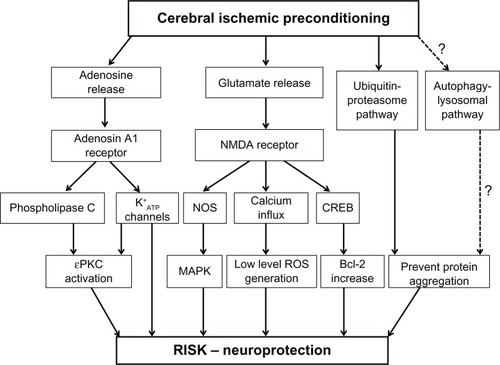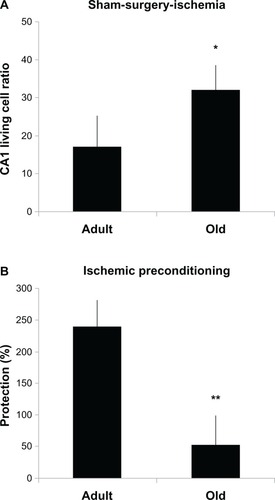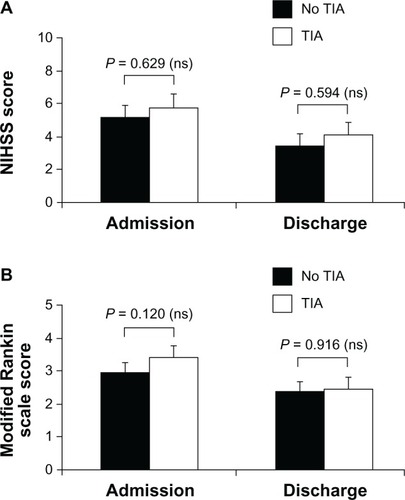Figures & data
Figure 1 Signaling pathways involved in cerebral ischemic preconditioning. Triggering pathways include activation of the NMDA and adenosine A1 receptors which in turn are involved in activating some intracellular signaling pathways such as MAPKs, PKC, bcl-2, heat shock proteins, ubiquitin–proteasome pathway, and autophagic-lysosomal pathway. These pathways probably involve activation of the RISK program.
Abbreviations: ATP, adenosine triphosphate; bcl-2, b-cell lymphoma 2; CREB, cyclic adenosine monophosphate responsive element binding protein; MAPK, mitogen-activated protein kinase; NMDA receptor, N-methyl-D-aspartate receptor; NOS, nitric oxide synthase; PKC, protein kinase C; RISK, reperfusion injury salvage kinase; ROS, reactive oxygen species.

Figure 2 CA1 “living cell ratio” was greater in the aged sham-surgery–ischemia group than in the young group (32% ± 6% versus 17% ± 5%, *P < 0.05) (A), whereas the degree of protection against full ischemia afforded by cerebral ischemic preconditioning was reduced in the aged compared with the young (53% ± 17% versus 241% ± 25%, **P < 0.0001) (B).

Figure 3 Neurologic status evaluated according to NIHSS (A) and disability assessed with modified Rankin scale (B) in elderly patients with or without TIA before stroke.
Abbreviations: NIHSS, National Institutes of Health Stroke Scale; ns, not significant; TIA, transient ischemic attack.
